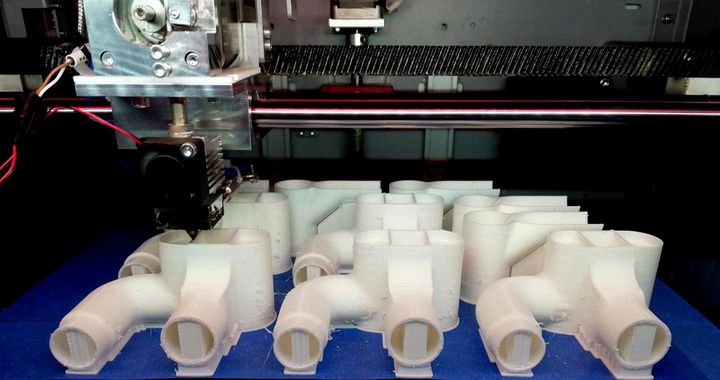
A question being asked is whether a plastic 3D printed part could replace a metal part, and the answer is increasingly, “Yes!”
3D Printed End-Use Parts
Years ago such a question would have been ridiculous. 3D prints were made from weak materials and flimsy construction, suitable only for use as prototypes where one could “look at them”. But don’t look too hard, or they would fall apart.
That’s all changed these days. The availability of stronger materials on virtually every type of 3D printer has triggered a small revolution in manufacturing, where parts are now being considered for end-use applications, as opposed to mere prototypes as in the past.
3D printers have been improved to the point where their output is almost at the maximum that could be achieved with their respective 3D printing processes. It’s now possible to obtain 3D prints that are entirely isotropic, a major step in meeting the strength of traditionally manufactured parts.
With these developments businesses worldwide are now exploring the possibilities of using 3D prints for low-volume production of end-use parts. This allows for less expensive production if the unit count is sufficiently low, and also the possibility of more complex part geometries.
Metal 3D printing is also possible, but it is by far the most expensive type of 3D printing, as it requires expensive equipment, facilities, post-processing equipment, materials and expert staff. Thus far its use has been relegated to industries where the end-use part costs are already high to compensate for the high price of 3D printing metal parts.
High-Temperature 3D Printing
More recently there has been the development of high-temperature thermoplastic 3D printing, pioneered by a few 3D printer manufacturers. The high temperature resistance of parts made in materials such as PEEK, PEKK, ULTEM and others has led to an interesting question.
Could these 3D printed parts be used instead of metal parts?
Low-temperature thermoplastic 3D prints were out of the question due to their weak strength and terrible heat resistance, so they were never seriously considered in this question. However, high-temperature materials, particularly those with strength enhanced by infusion of carbon fiber, exhibit both strength and high heat resistance and thus approach the engineering characteristics of metals.
They’re also quite a bit lighter weight than metal, and because they are 3D printed, they can take on unusual geometries that can enhance performance or even reduce weight further.
Certainly the heat resistance of, say PEEK at up to 250C, is far greater than conventional 3D printable materials, though it is lower than metals. Aluminum’s glass transition temperature is 660C, for example, and steel is over 1000C.
But what if your application requires a part that doesn’t quite need as high a temperature resistance? What if the thermal resistance required is above conventional 3D print materials, but less than metal? Could a thermoplastic part do the job?
It certainly can in many cases, although part makers may not yet realize it.
Discovering High-Temperature 3D Printing
One that seems to, however, is Italy-based LEONARDO SPA, a “global high-tech aerospace, defense and security company”. They’ve recently been testing high-temperature materials such as carbon-fiber reinforced PEEK using equipment from ROBOZE, which specializes in high-temperature 3D printing.
Their findings seem positive, according to Stefano Corvaglia, Intellectual Property Manager and Head of Research and Development of the Aerostructures Division at LEONARDO SPA:
“Techno-polymers such as Polyether Ether ketone (PEEK), combined with a high presence of chopped carbon fibers, open up some interesting horizons for development. Testing with these materials is of particular scientific and technological interest, since they give some structural and chemical-physical properties of extreme technological significance to the items produced, for example thermal and chemical resistance.
What’s more, thanks to a technology that enables us to achieve previously unattainable levels of precision in fabrication, we can improve our capacity and speed in developing prototypes.”
My expectation is that there will be more companies like LEONARDO SPA in the future, as each will individually discover the benefits of 3D printing with thermoplastics instead of metal.
Via LEONARDO SPA and ROBOZE
